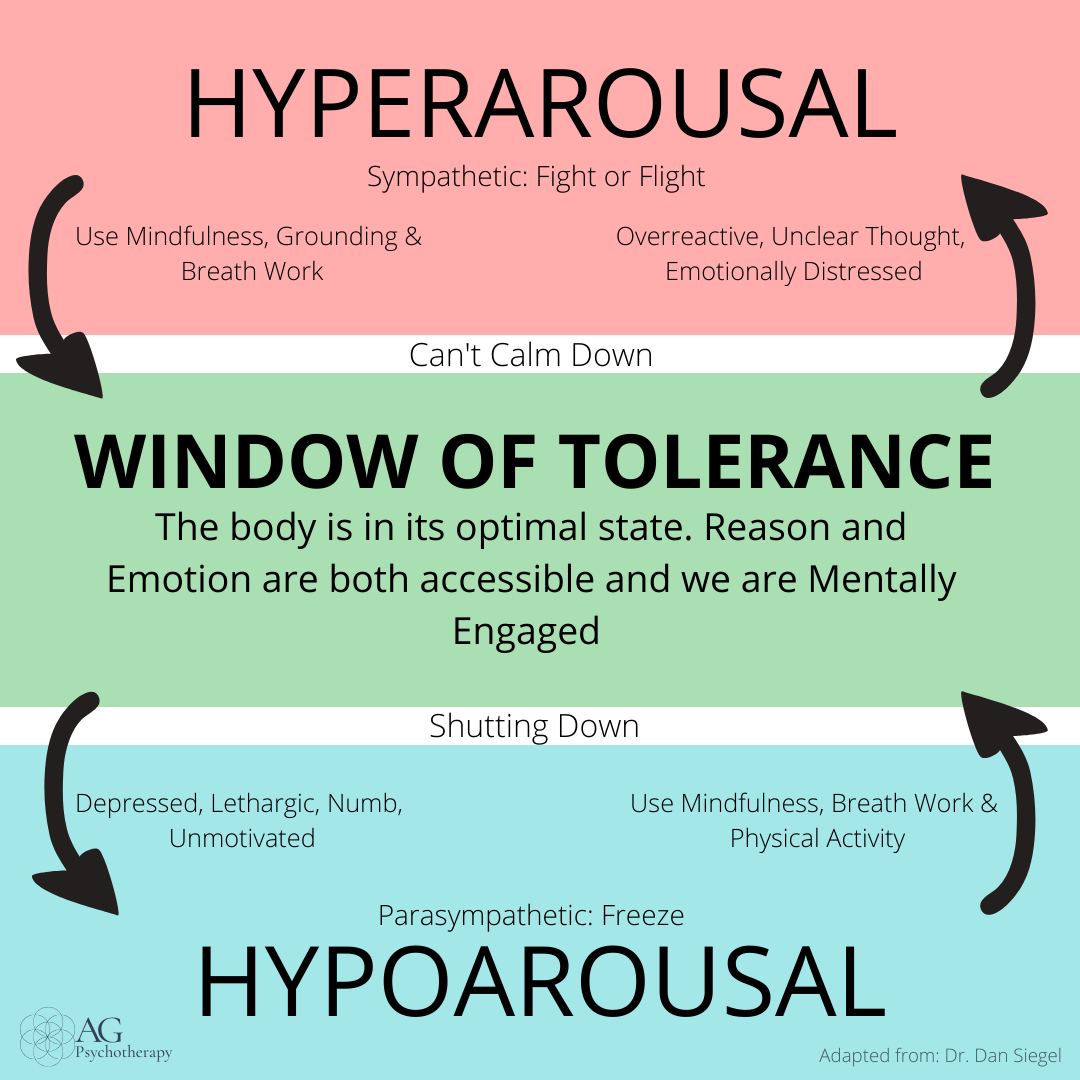The Window of Tolerance
The "Window of Tolerance" is a concept commonly used in the field of psychology, particularly in the context of trauma and stress. It was introduced by Dr. Dan Siegel, a clinical professor of psychiatry, as a way to understand and describe the optimal arousal zone for human functioning.
The Window of Tolerance can be thought of as a range of emotional and physiological states within which an individual is best able to cope with everyday stressors and challenges. When a person is within this window, they can think clearly, engage in effective problem-solving, and maintain emotional regulation. This optimal zone allows for flexibility in responding to various situations.
However, individuals who have experienced trauma or chronic stress may find themselves outside the Window of Tolerance. When someone is in a state of hyperarousal, they may feel overwhelmed, anxious, or agitated. On the other hand, hypoarousal is characterized by feelings of numbness, dissociation, or being emotionally shut down.
Therapeutic interventions often aim to help individuals expand their Window of Tolerance, allowing them to tolerate a broader range of emotions and stressors. This can involve various techniques such as mindfulness, relaxation exercises, and trauma-focused therapies. It is important to note that the concept of the Window of Tolerance is just one way to understand and approach emotional regulation and trauma.
References
Mindfulness and the Window of Tolernace: mast.stmichaelshospital.com
Siegel, D. (1999). The developing mind: How relationships and the brain interact to shape who we are. New York: Gulliford Press
The Autonomic Nervous System
Image: Pearson Prentice Hall, 2005
The Autonomic Nervous System
Our nervous system is composed of two divisions; the central nervous system and the peripheral nervous system (reference). The peripheral nervous system has two divisions; the somatic nervous system and the autonomic nervous system. The somatic nervous system is the division of the nervous system that interacts with the external part of our world. The autonomic nervous system observes and manages the body’s internal experience.
There are three important aspects of the sympathetic and parasympathetic nervous system:
Sympathetic nerves stimulate, organize, and mobilize energy resources in threatening situations & parasympathetic nerves act to conserve energy
Each autonomic target organ (an organ that is innervated with nerves from the ANS) has a nerve branch from both sympathetic and parasympathetic branches and the activity of the organ is controlled by the activity of each system
Sympathetic changes are representative of psychological arousal and parasympathetic changes are associated to psychological relaxation (This is a general rule and there are some exceptions)
References
Pinel, J. (2014). Biopsychology, 9th edition. Pearson
van der Kolk, B. A. (2014). The body keeps the score: Brain, mind, and body in the healing of trauma. Viking.

